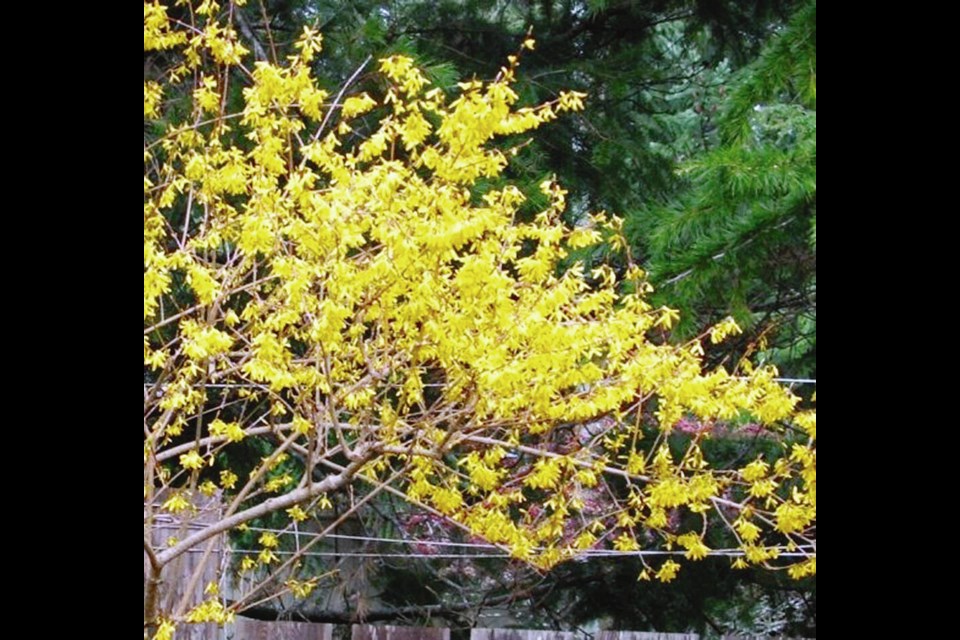Mid-February has always been for me a sort of marker. After that point, the worst of winter is usually over. This year, late February featured a week of freezing temperatures.
Gardeners watch late winter temperatures carefully, to calculate the best time for winter (dormant season) pruning. A usual indicator that the ideal pruning time has arrived is the start of growth bud swelling on roses and other summer-flowering shrubs.
Fruit trees are commonly pruned around the same time, but over the years I’ve followed up a very light late winter pruning on my apple trees with summer pruning in two stages, the first following the June “fruit drop” as the trees shed excess fruit and another in July, to maintain a compact, uncongested tree with lightly shortened new growth.
Excess winter pruning of a fruit tree promotes rampant growth and the production of upright “water sprout” growth. Summer pruning has the opposite effect. It helps to curb over-exuberant growth and keep a tree as compact as possible.
I don’t prune my plum tree until the weather is warm, dry, and sunny and after small fruits have formed. I do further plum pruning at harvest time in late August and early September.
The calendar is no longer, if it ever was, the best guide to the timing of late winter pruning. Budswell on the target plants is a more reliable indicator. Another, traditional marker declaring the time is right to prune is forsythia. Bloom on a forsythia is considered a green light for winter pruning.
Forsythia flowering time will vary from year to year and in different locations. This year, where I live, the flower buds didn’t even begin to show any hint of swelling until the beginning of this month.
A caution: Don’t prune lilacs and other spring-flowering shrubs now. Wait until their bloom periods have ended.
Blocks of ice. Margaret has kept me updated on the progress of the hardy vegetables (kale, chard, lettuce, leeks) that she seeded on Nov. 20 into flats she covered with large, used, bottomless water bottles. The seedings were left out in the open and, in spite of snow and frost during the Christmas holidays, the seeds came up and did well.
Following the period of freezing weather late last month, Margaret emailed again to say that, to her surprise, the seedlings, exposed once more to -5 C temperatures out in the open, “survived very well.”
Another frosty episode: On a February ramble through my local Buckerfield’s store to acquire seeding supplies, I ventured into the outdoor nursery area. No new plants had yet arrived, but I spotted a lone plant tray with a few tiny pots housing pretty little evergreen plants, identified as Gaultheria — Wintergreen.
I immediately remembered a January email from Gail, who wrote of her delight in a Gaultheria procumbens (wintergreen) plant she’d been given and had transplanted outdoors after enjoying it in the house over the holidays.
A relative of our native salal (Gaultheria shallon), wintergreen is a much more compact, low-growing plant with small, glossy leaves, summer flowers and red berries in the fall.
I bought three of the little plants and set them on a plant tray on shelving beside the garden shed. Then came the February freeze-up, which turned the root balls into blocks of ice. As the weather warmed and rainfall was at hand, I transplanted them alongside a pathway, under the female kiwi vine.
So far, they seem fine. I like their neat shape, the currently crimson-blushed green leaves, and the red-tinged stems. These are creeping plants that should, in time, form an ornamental carpet.
Through the late February week of freezing overnight temperatures, I kept my little salad garden, transplanted early in the fall, protected with floating row cover. When I uncovered the bed at the end of the month, I found a nicely plumped Castelfranco radicchio. Brought into the house and rinsed, the crimson-flecked cream and green leaves have added colour and fine tart notes to several salads.
Peninsula meeting. The Peninsula Garden Club will hold an in-person meeting on Monda at 7 p.m. in the Mary Winspear Centre in Sidney. Diane Pierce from the Horticulture Centre of the Pacific will speak about “delightful spring flowers and foliage.” Admission for drop-in guests is $5. COVID protocols will be in place. peninsulagardenclub.ca.



